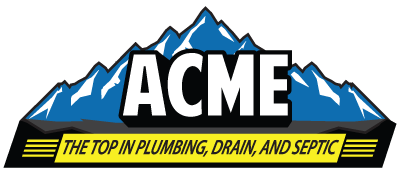Detecting and Fixing Hidden Plumbing Issues That Impact Efficiency
Hidden plumbing issues can lurk behind the walls of your home, silently impacting water efficiency, increasing utility bills, and potentially causing serious damage if left untreated. Detecting these problems early and fixing them promptly not only saves you money but also ensures that your plumbing system operates at peak performance. In this blog, we will explore common hidden plumbing issues, how to detect them, and the steps to take to address them efficiently.
1. Leaky Pipes
Leaky pipes are one of the most common hidden plumbing issues. They often go unnoticed, as they can occur behind walls or under floors. Even a small leak can lead to significant water waste and increase your water bill. Over time, leaks can cause mold growth, structural damage, and ruin your home's insulation.
How to Detect Leaky Pipes:
Watch for increased water bills without a change in usage.
Look for damp spots on walls, ceilings, or floors.
Notice the smell of mold or mildew in areas with poor ventilation.
Monitor for signs of low water pressure, which may indicate a leak.
How to Fix Leaky Pipes: If you suspect a hidden leak, it's important to call a plumbing service for an inspection. Using modern equipment like video pipe inspection and thermal imaging, plumbers can accurately locate leaks without damaging your home. Once detected, the plumber can either repair the section of pipe or, if necessary, replace it entirely.
2. Clogged or Collapsing Sewer Lines
Sewer lines can become clogged due to buildup of debris, tree root infiltration, or even old age. Sewer line issues are serious and can lead to backups, slow drains, and unpleasant odors. A collapsed sewer line can result in extensive property damage, requiring immediate attention.
How to Detect Sewer Line Issues:
Slow drainage across multiple fixtures in your home (toilets, sinks, showers).
Frequent toilet backups or gurgling sounds when flushing.
Unpleasant sewage odors around your home or yard.
Wet patches in the yard that aren’t related to rain.
How to Fix Sewer Line Issues: Regular drain cleaning and maintenance can prevent clogs from escalating. If a clog or damage is detected, solutions range from hydro jetting to clear blockages, to trenchless pipe repair for more significant damage. A professional plumber can assess the severity and recommend the best approach for repair.
3. Water Heater Inefficiencies
Your water heater plays a key role in the efficiency of your plumbing system. When it starts malfunctioning, it can waste energy and increase utility bills. Hidden issues like sediment buildup, faulty temperature controls, or leaking pressure relief valves can lead to poor heating efficiency.
How to Detect Water Heater Issues:
Inconsistent water temperature or delayed heating.
Unusual noises like rumbling or popping coming from the water heater.
Water pooling around the base of the water heater.
How to Fix Water Heater Inefficiencies: Routine maintenance is essential to extend the life of your water heater. Draining the tank to remove sediment buildup, inspecting the pressure relief valve, and checking for leaks are basic steps you can take. In more serious cases, it might be necessary to replace the water heater to restore efficiency.
4. Hidden Pipe Corrosion
Older homes often have galvanized steel pipes, which are prone to corrosion over time. Corroded pipes can cause water discoloration, restricted water flow, and eventual leaks. These issues are often hidden behind walls, making them difficult to detect.
How to Detect Pipe Corrosion:
Rust-colored water coming from taps.
Low water pressure in one or more fixtures.
Visible signs of corrosion or flaking on exposed pipes in basements or crawl spaces.
How to Fix Pipe Corrosion: Replacing old, corroded pipes with modern materials like copper or PEX is the best solution. A professional plumber can assess which sections need to be replaced and ensure your home’s plumbing system is functioning efficiently.
5. Undetected Faucet Leaks
Even small faucet drips can lead to wasted water and higher bills over time. These leaks can be tricky to detect if they occur in less-used areas of the home or are slow enough to go unnoticed.
How to Detect Faucet Leaks:
Check unused sinks and outdoor faucets regularly.
Listen for the sound of dripping water when faucets are turned off.
Watch for spikes in your water bill.
How to Fix Faucet Leaks: Fixing a faucet leak usually involves replacing worn-out washers, cartridges, or seals. In some cases, it may be necessary to replace the entire fixture.
Hidden plumbing issues can significantly impact your home's efficiency and cause damage over time. Being proactive about detecting leaks, maintaining your water heater, and checking for clogged sewer lines can save you money and prevent costly repairs down the road. If you suspect hidden plumbing issues, contact a professional plumber like ACME Plumbing to perform a thorough inspection and address the problems before they escalate.
